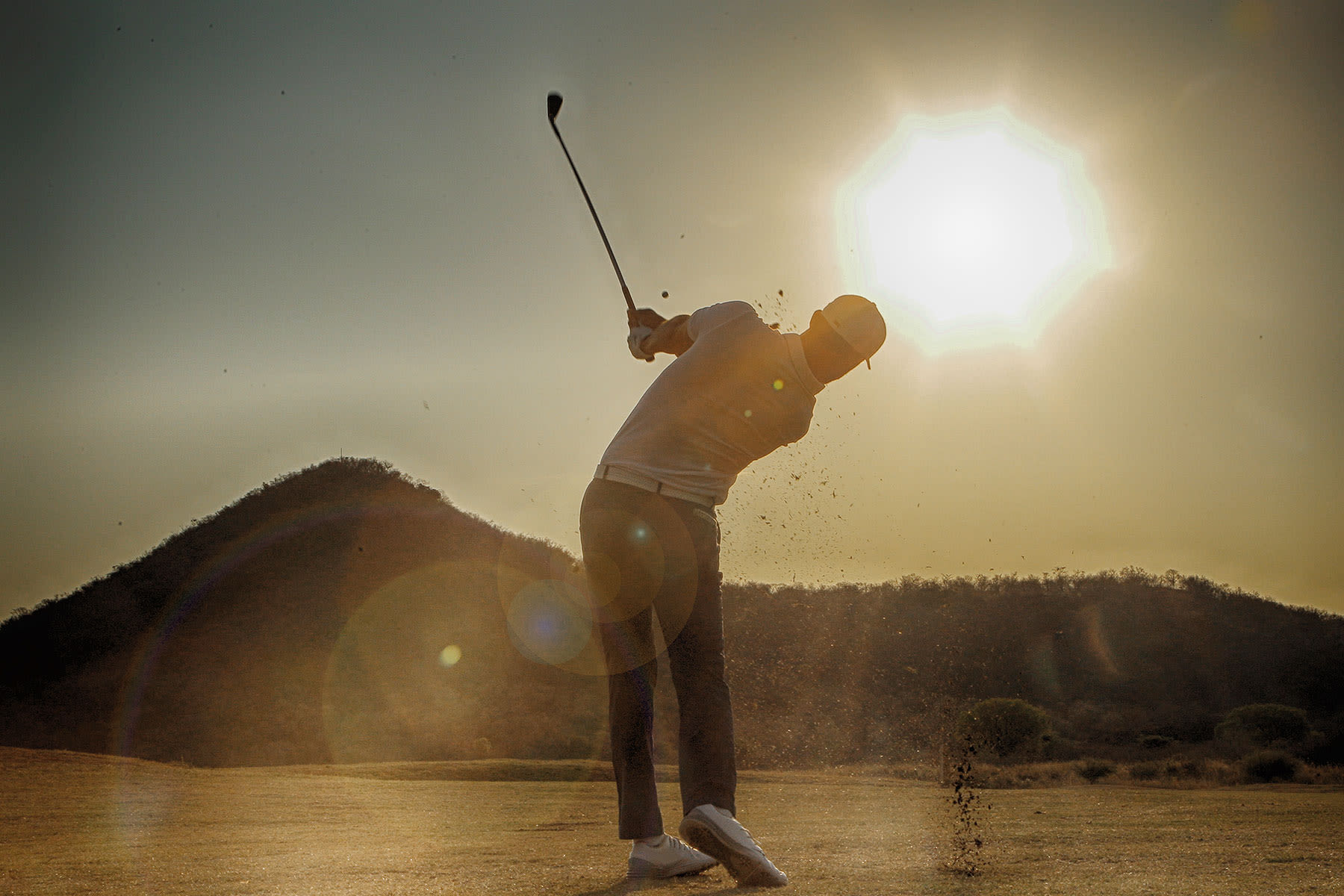Get Started
Control and shape your shots
Published on

Getty Images
Hitting a draw
For everyday golfers, I usually recommend the basic fundamental of playing from a square or neutral address position, as this will give you the best chance of delivering your club squarely to the ball at impact, in order to produce a straight ball flight.
To deliberately curve the ball, you need to make some adjustments — primarily in your address position
To illustrate, in order to draw the ball from right to left, you want your clubhead to enter the hitting area from inside the target line. The simplest approach is to close your address position. In other words, pull your trail side (right side for right-handed golfers) back from the target line. This sets your feet, knees, hips and shoulders in position to make an inside-to-down-the-line-to-inside swing, which will put a counter-clockwise spin on the ball, causing it to curve to the left.
You will need to aim the clubface where you want the ball to start. This swing shape allows your arms and club to rotate faster than your body through the hitting area and helps ensure a proper inside-to-outside swing path to produce a draw.
A few more thoughts on hitting draws
The best club to practice a draw or a fade with is a 5-iron, since it has enough loft to easily get the ball airborne and still put enough sidespin on the ball to properly execute the shot. The more loft a club has, the more difficult it is to curve the ball.
The ball tends to have lower flight and run farther than it would if it were played with a standard shot, because you are actually taking "effective" loft off the club. In other words, a 5-iron will really have the loft of a 4-iron at impact. So, make sure that you select a club with enough loft to play this shot.
It is difficult to hit a hook with a long iron, because the shape of your swing causes the clubface to close down as it reduces the true and effective loft of the club.
Hitting a Fade
Conversely, you need to address the ball with a slightly open stance when hitting a fade – with your target or forward foot pulled back away from the target line. This promotes both taking the club away from, and returning to, the ball outside the target line. This swing path allows the clubface to cut across the ball at impact, producing a clockwise spin that curves the ball from left to right.
Because the swing you make with a fade places your body ahead of the club, a fade will cause the ball to fly higher than normal and often stop more quickly when it hits the ground. As a result, many people believe it is a safer, more easily controlled shot than a draw – but keep in mind that the shape of a fade swing actually increases the effective loft of a club. While the ball will fly higher than a normal shot, it won't carry as far. So, in effect, when playing a fade shot with an 8-iron, you will actually produce a shot that has the trajectory and distance of an 9-iron.
Wherever your golf journey is heading, let’s get you there. There are nearly 29,000 PGA Professionals ready to help. Find yours at pga.com/journeys.
